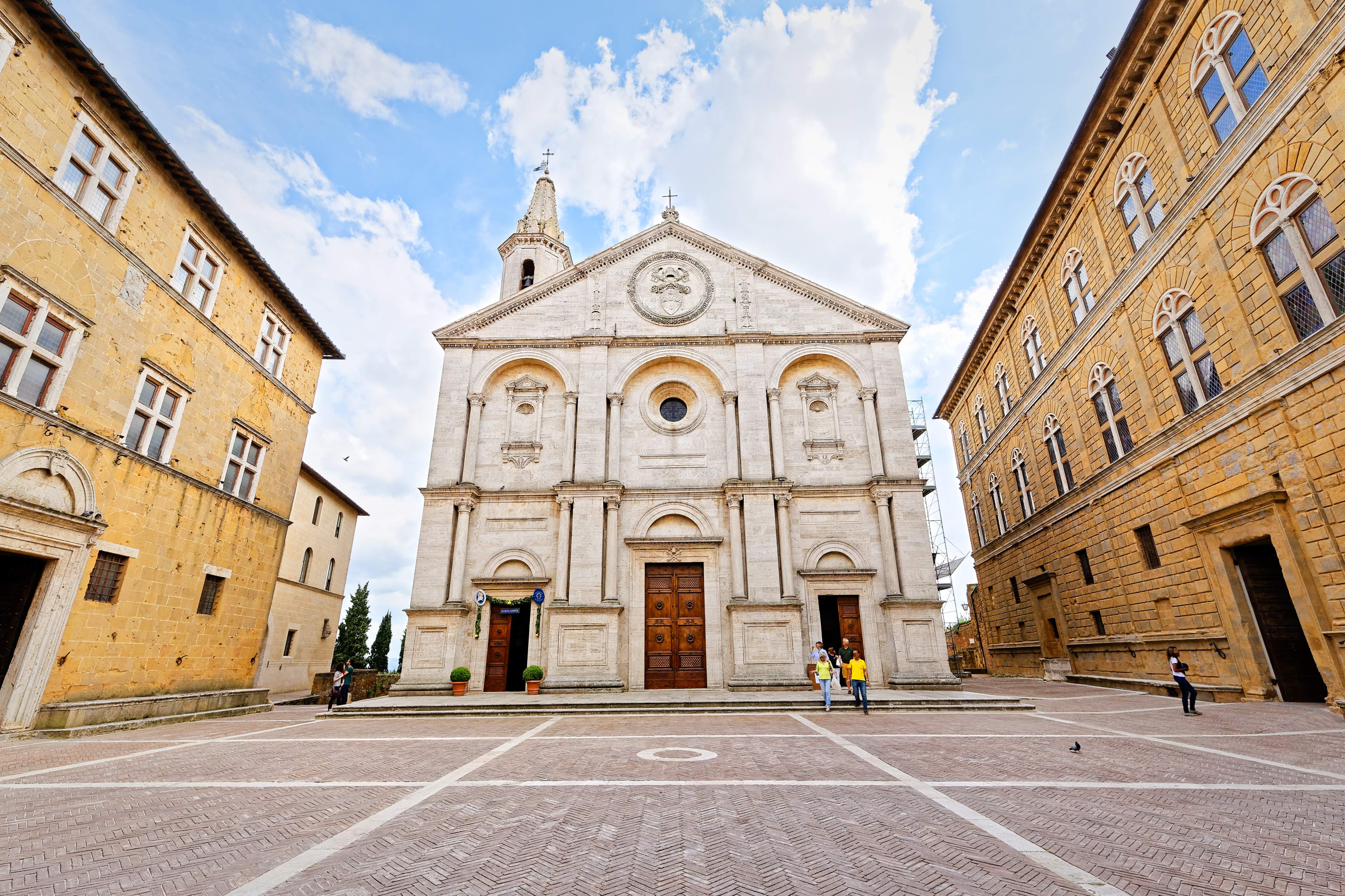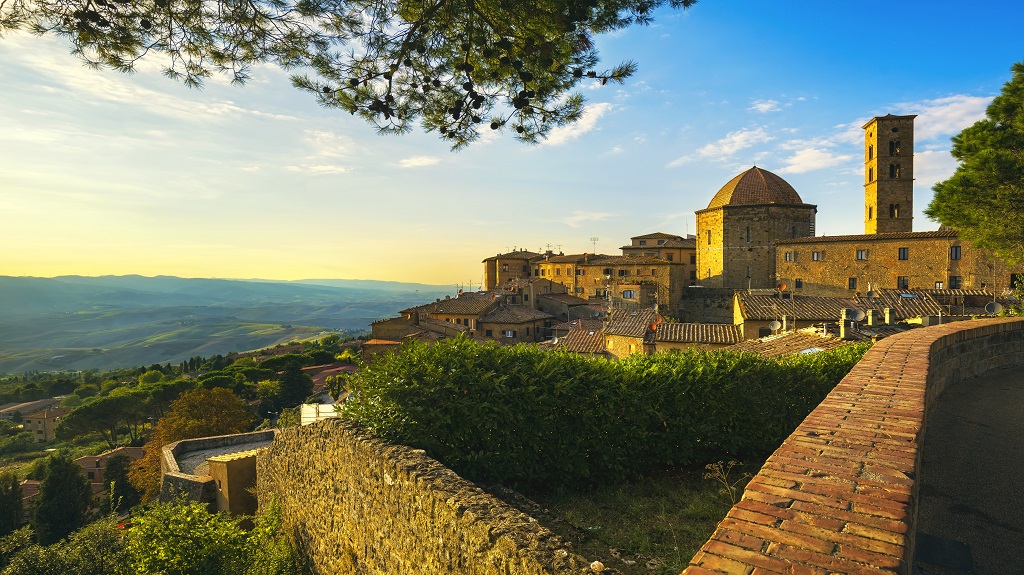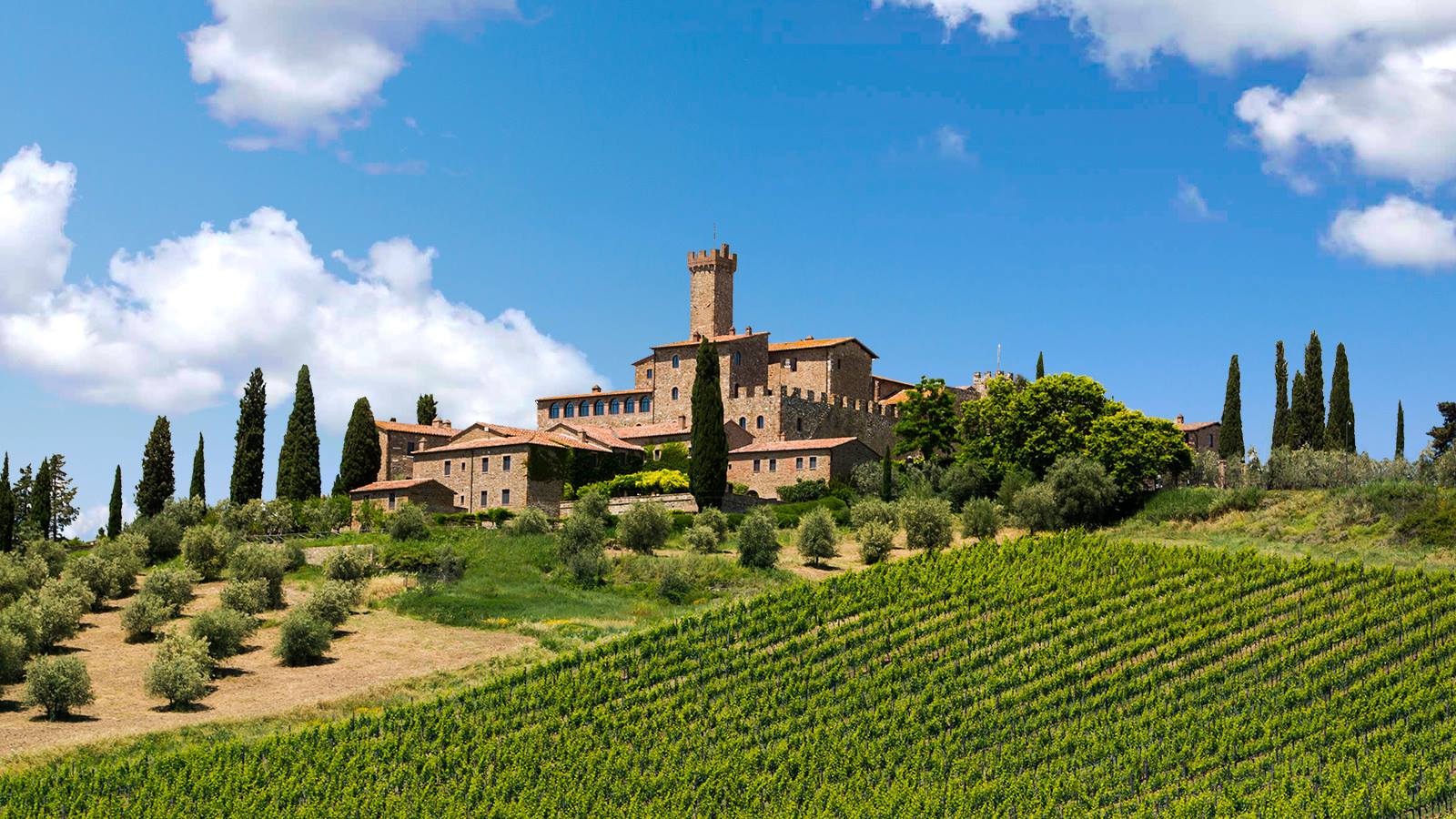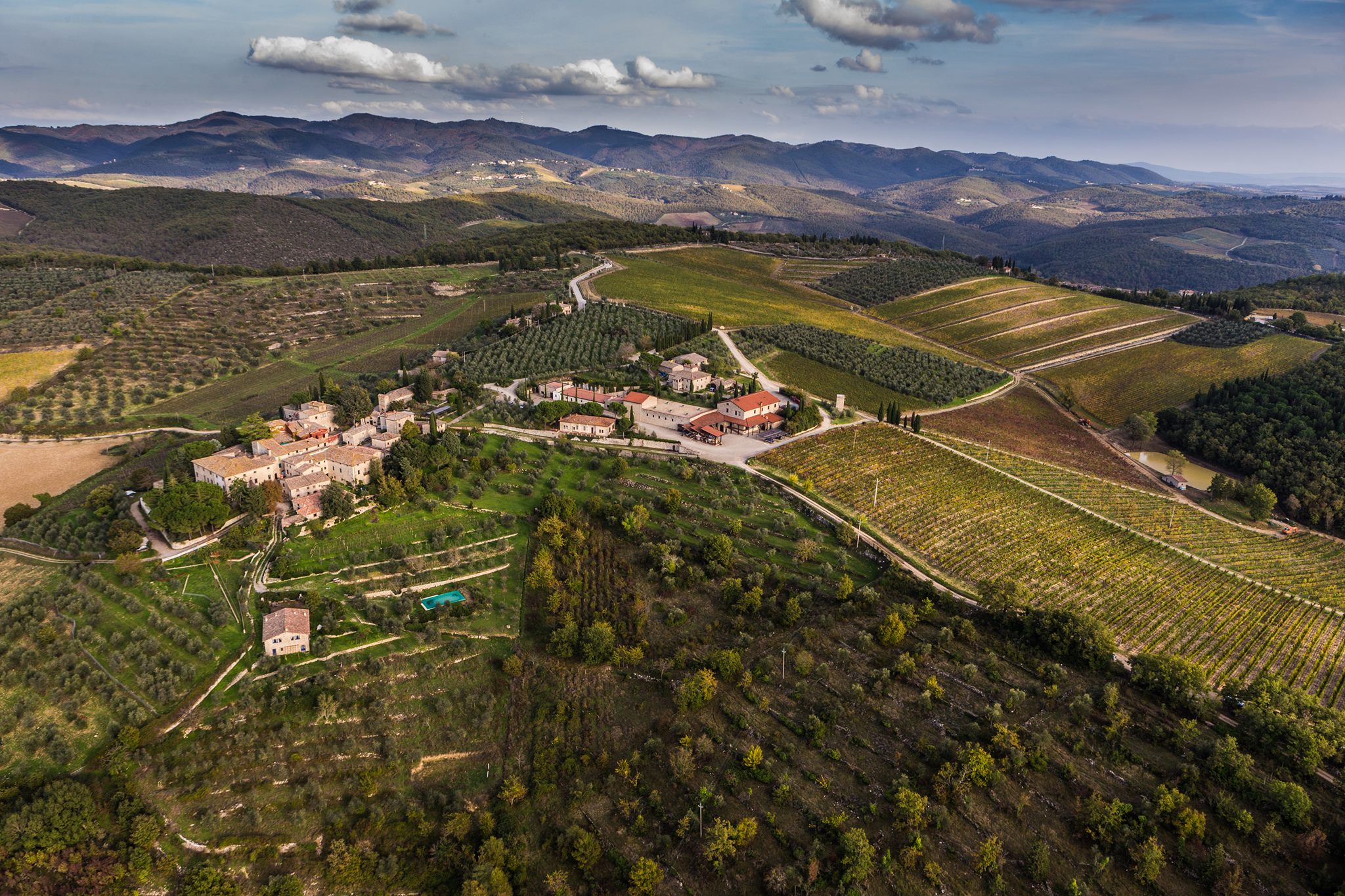Among Mark Twain’s many compelling quotes from his traveling the world in the late 19th-century, one of our favorites is his description of Italy: “The Creator made Italy from the design of Michelangelo”. This observation also perfectly applies to the verdant landscapes of Tuscany. In the countryside, among the many vineyards and olive groves, there are hamlets and farmhouses, as well as fortified villas and castles that symbolize the violence and inter-communal strife that tore Tuscany apart in the Middle Ages. Now, Tuscany is a peaceful region known for its many vineyards producing some of the finest wine in the world and making for great winery touring. We feel that Tuscany is one of the most truly bucolic settings in all of Europe.

Lucca
Lucca is one of our favorite preserved fortress towns in all of Italy. The city is noteworthy for its magnificent city walls. The walls were built from 1500 – 1650 and now accommodate lush, leafy parks and promenades lined with chestnuts and umbrella pines. You may pick up bikes in the central piazza from where you will ride up onto the great walls to enjoy the idyllic views of the gardens and Apuare Alps. Lucca is particularly engaging in the evenings with its various piazzas alive with families enjoying the unique Italian phenomenon of passeggiata. San Columbano, a recently restored café, is a fun stop for refreshments outside the city walls.

Pienza & Montepulciano
Pienza is a nearby UNESCO World Heritage jewel with renaissance buildings and its famous ewe (female sheep) cheese, (pecorino di pienza – Bev’s favorite!). The center of Pienza was redesigned by Pope Pius II. Montepulciano is an archetypal Tuscan hilltop town, set 605 meters above sea level and offering superb views over the surrounding countryside. Inside the ancient city walls and fortifications, you will find winding streets and a wealth of Renaissance-style palazzi and churches and, of course, wine-tasting! We truly agree with Rick Steves who called Pienza a “pint-size Renaissance town”. Due to its uniqueness and picturesque scenery, Pienza tends to draw a large tourist crowd, so we recommend a midweek visit over a weekday stopover.

Siena
In large part unchanged for 800 years, the center of Siena’s life is undoubtedly its 13th-century main square, The Piazza del Campo. Clients may recall this as the venue for the annual bareback horse race, Il Pallo, held on the second of July and August 16th each summer. We feel Siena is a significant, much less touristy (and perhaps livable) alternative to Florence. With winding redbrick lanes and Gothic architecture, particularly the ornate Siena Cathedral, Siena is brimming with medieval allure, transporting you to a time centuries ago. Innumerable new restaurants, boutiques, and wine bars have opened here in the past few years, making Siena a fun and compelling, full-day destination. Our restaurant favorites include: Enoteca I Terzi (Tuscan bistecca fiortina – grilled steak), Bar Il Palio (delicious lasagna + best views for people-watching at the Piazza del Campo!), and Tre Cristi (established in 1830, this is the go-to place for seafood in Sienna).

San Gimignano
San Gimignano derives its name from the Bishop of Modena of the same name who, legend has it, saved the city from Attila the Hun. In early times, San Gimignano prospered due to its location on the Via Francigena, “the road that comes from France”, a road running from France to Rome and a popular pilgrimage trek for those wishing to visit the Holy See and the tombs of the apostles Peter and Paul. Most noteworthy are the 14 surviving medieval towers that remain out of the original 72. It was common for prominent families to build towers taller than their neighbors’ as a sign of wealth and power. Its medieval architecture draws large tourist crowds, though a stopover here is definitely recommended. Visit at night when the crowds die down and you can try some Vernaccia di San Gimignano, a wine made from grapes in the region and considered by many to be one of the finest Italian white wines.

Volterra
One of twelve towns belonging to the Etruscan confederation at the end of the 4th-century, Volterra – or ‘Velhathri’, its traditional Etruscan name – has changed hands many times over the centuries, until finally becoming part of the Kingdom of Italy in 1860. The city is entered through the Porta all’Arco, a massive gateway adorned with the weathered heads of three Etruscan gods: Uni (Juno), Tinia (Jupiter), and Menrva (Minerva). On the complete opposite end of the town, is the Portone gateway – or “Porta Diana”, as the Romans called it. Within the large, fortified walls is the Piazza dei Priori Dating back to the 12th-century, surrounded by medieval-style Tower-Houses and the Palazzo Priori, this is a castle-like bell-tower and the oldest Town Hall in all of Tuscany. Particularly noteworthy is the Acropolis of Etruscan Velathri, where the Etruscans erected two temples to honor their gods, and the underground cistern that dates back to the first–century and was responsible for providing water for the whole of the Acropolis – a unique site!

Cortona
Enclosed by stone walls dating back to the Etruscan and Roman times and sitting nearly 2,000 feet above sea level, sits the town of Cortona, with its impeccable views of the Valdichiana (Chiana Valley) and Lake Trasimeno. With a population of only 22,000, Cortona is small but offers much by way of charm. Local handmade items, delicious wine, and traditional Tuscan delicacies are plentiful here. We strongly recommend visiting the Diocesan Museum, an art museum built on the former site of the Church of Gesù, which houses pieces dating back to the second century AD. If interested in archeology, The Etruscan Academy Museum of the City of Cortona (MAEC) offers the chance to view artifacts from Etruscan civilization found in the area.
Our Favorite Tuscany Hotels

Borgo Santo Pietro
Though there are many wonderful hotel/residence choices in Tuscany, we feel that Borgo Santo Pietro is particularly special. This lavish 15-room boutique hotel, restored from a 13th-century stone farmhouse, epitomizes idyllic Tuscan life and personal service. Located approximately 35 minutes southeast of Siena and 90 minutes from Florence, the property is set in a rural corner of Tuscany, including lovely cypress trees among the 13 acres of landscaped gardens. We felt the full flavor of Tuscan life while staying here! The Borgo’s Garden Suites are our favorite rooms, each with their own private terrace and garden. All rooms feature pine floors, beamed ceilings, fireplaces, and period antiques. Although there are many areas for some quiet reflective time, family activities include a free-form outdoor pool, tennis, bocce and basketball courts, and a very nice spa. Being big garden fans, Bev, Zen, and I particularly enjoy the lush, green lawns dotted with secret garden pathways, grottos, and traditional Italian roses – truly heavenly for one’s open-air private moments. We loved the hearty breakfasts served in the large, warm country kitchen (cooking classes and wine tasting available). We rate the Borgo Santo Pietro an A+ among Tuscan luxury properties!

Castello Banfi – Il Borgo
With only six rooms and nine suites, this rustic country house property is set in a picturesque hilltop castle. We feel the luxury here is very much an understated and authentic style, in keeping with a relaxed Tuscan home. We enjoyed the cooking schools and the Castello’s outstanding dining!

Castello di Ama
A working wine estate and one of the most famous in Tuscany, we recommend the 18th century 4-suite Castello di Ama to our wine connoisseur clients. The estate is located in the hamlet of Ama, near the village of Lecchi in Chianti, in Siena province.
The property’s 4-suites are located in its 18th-century villa Ricucci. Each suite has panoramic views and preserved heirloom furniture. Onsite you may dine at Il Ristoro di Ama, described as more of a winery with a kitchen than a restaurant. If less focused on luxury amenities, Castello di Ama provides the highest quality wine experience.
The estate vineyard was replanted 35 years ago, now comprising 90 hectares of vines and 40 hectares of olives. 1600 feet above sea level, the land has conditions ideal for Sangiovese, Merlot, Chardonnay, and Pinot Noir. Aside from wine, the estate has a notable site-specific contemporary art collection from artists including Anish Kapoor, Daniel Buren, and Louise Bourgeois.

